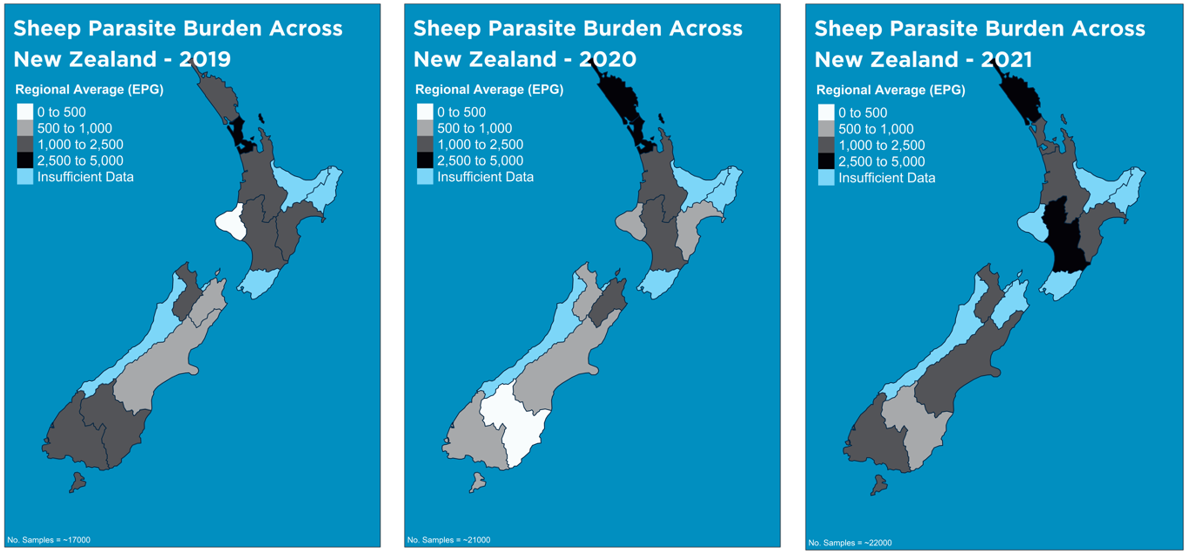Big data shows sheep parasite challenge is constantly changing
08 September 2021
Dunedin NZ: Techion’s high throughput laboratory and network of farm and veterinary FECPAKG2 customers generate over 30,000 faecal egg count (FEC) samples a year, providing unrivalled data to analyse seasonal and regional variances in parasite levels across New Zealand.
Year-on-year data from each region demonstrates parasite burdens can vary vastly from one season to the next. Mapping this data illustrates how challenging the parasite burden has been through the 2021 production year, with the infographics showing the parasite burden across the country is generally much higher than it was in the previous two years.

Techion’s infographic of FEC testing by region over three years illustrates how the parasite burden changes each season. For example 2021 is the first time Manawatu-Wanganui has recorded a high parasite challenge; while Southland had a low parasite challenge in 2020, in 2021 it is recording a moderate parasite challenge.
For ease of reporting Techion has classified the FEC counts as follows;
- Regions where the average FEC counts were less than 500epg - low parasite challenge
- Regions where FEC counts were between 500-1000epg - moderate parasite challenge
- Regions where FEC counts were over 1000epg - high parasite challenge
According to Techion founder and CEO Greg Mirams, several factors influence the variation in the parasite challenge, these include; weather - larvae survival is higher in wetter seasons, feed availability - animals under nutritional pressure are more susceptible to parasites, and undetected drench resistance – the drench is not killing all the parasites when they have been treated
Greg explains; “Many farmers believe drenching on a calendar schedule protects their animals from a parasite challenge. However, as our analysis shows, the parasite challenge is constantly changing as local conditions change and this is different every year. Parasites don’t adhere to a regular annual calendar.”
Techion’s data demonstrates that the parasite challenge through the 2021 production season was generally higher, with peaks occurring earlier than in previous years. Several extreme FEC counts were recorded in the 2021 season with the highest count at 46,000epg.
“By testing frequently throughout the year, farmers can catch the parasite burden before it starts to impact stock. Weight loss, slow weight gain and poor condition and all signs that stock are impacted by a high parasite challenge,” Greg says.
“It is important to remember these signs may even occur when sheep have been regularly drenched and have adequate feed. Drench resistance, high levels of larvae intake or poor drench practices can result in animals having a parasite burden even when they have been drenched regularly. Therefore it is vital to FEC test regularly throughout the year as well as follow up testing after drenching to ensure that the drench is working effectively.”
-ends-
